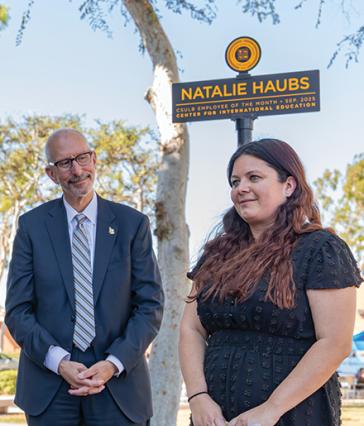CSULB long at the center of today’s 'Space Beach'
At the June 2021 Long Beach Economic Partnership Quarterly Forum, city and business leaders in Long Beach — dubbed "Space Beach" by Mayor Robert Garcia — explored the resurgence of the aerospace and astronautics industry in the region.
Cal State Long Beach has been at the center of this work for decades, developing both undergraduate and graduate programs, among others, in aerospace engineering, mechanical engineering, and industrial design, forging immersive co-curricular experiences and workforce pipelines with industry partners, and spearheading research for rocket fuels, propulsion systems, and additive manufacturing.
This recent surge in the space industry echoes the post-World War II aerospace boom, when CSULB, the U.S. military and private companies forged lasting partnerships to develop a highly skilled local workforce and shaped the fortunes of the first space race. Since then, CSULB has remained a constant partner of industry leaders and a cornerstone of bold initiatives that have presaged Space Beach.
It's a rich story long in the making, which has centered The Beach as the fuel for flight and humankind's reach for the stars.
Post-WWII Boom
With a new space industry boom driving the region's post-COVID economic recovery, presenters at the June Economic Forum explored the past, present, and future of astronautics in Long Beach and the intersection of academics and industry shaping the region's workforce.
Dr. Tracy Bradley Maples, former interim dean of the College of Engineering, described CSULB's history with the aerospace industry:
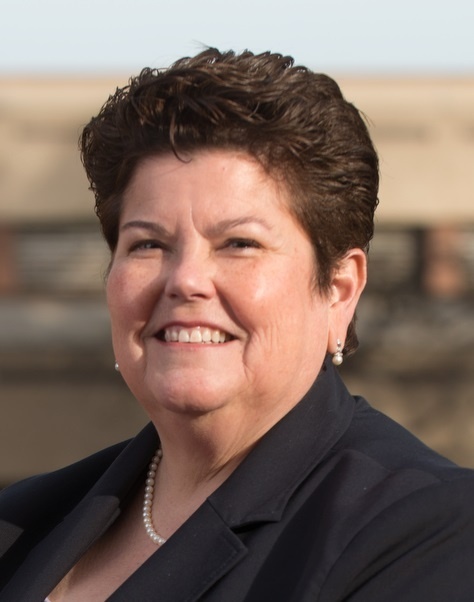
“After World War II, Los Angeles and Long Beach were booming aerospace areas. The call went out from aerospace agencies that they needed more employees, they needed skilled employees, they needed educated employees. That’s when the space race began, and the College started at the same time.”
That call for innovation launched an industrial ecosystem between the City of Long Beach, Long Beach State, and innumerable area businesses that has endured for more than 64 years - from the early days of private, commercial, and defense aviation, to modern space initiatives.
“CSULB’s Engineering Department was established in 1957, the year that Sputnik, the first Earth satellite, went into orbit,” Maples elaborated via email.
By the time Astronaut Neil Armstrong took the first step on the moon, CSULB was producing mechanical, electrical and civil engineers to work in local aerospace and technical industries.
As the department developed degree programs in civil, electrical, and mechanical engineering, industry leaders became increasingly involved with the College and its curricula. Employees from Hughes Aircraft - the aerospace company Howard Hughes established in 1932 - were among the Engineering Department’s first faculty members, and a group of nine senior executives from local aerospace companies formed the original Dean’s Advisory Council.
Year by year, the College supported new affinity groups such as the Society of Women Engineers, the National Society of Black Engineers, engineering honor societies, the Long Beach Rocketry Club and the American Institute of Aeronautics and Astronautics.
The College added computer engineering and computer science degrees, and by 1985, was the largest engineering school west of Texas. Its growth mirrored the explosion of aerospace ventures in the region, where the open landscape seated aircraft hangars and production lines, the proximity to the Long Beach Airport and Edwards Airforce Base near Lancaster provided global reach, and a highly skilled workforce emerged within the local community.
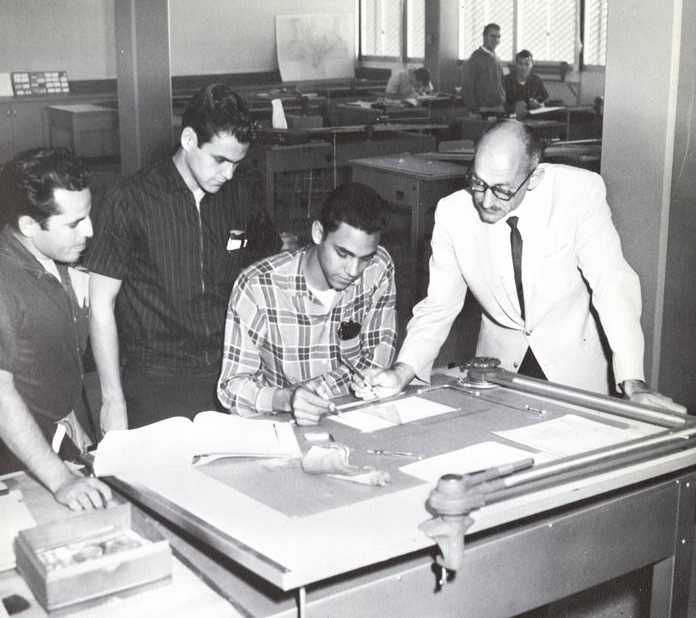
1962 Engineering Drafting
Professor Lawence Kundis assists students with problems in mechanical engineering.
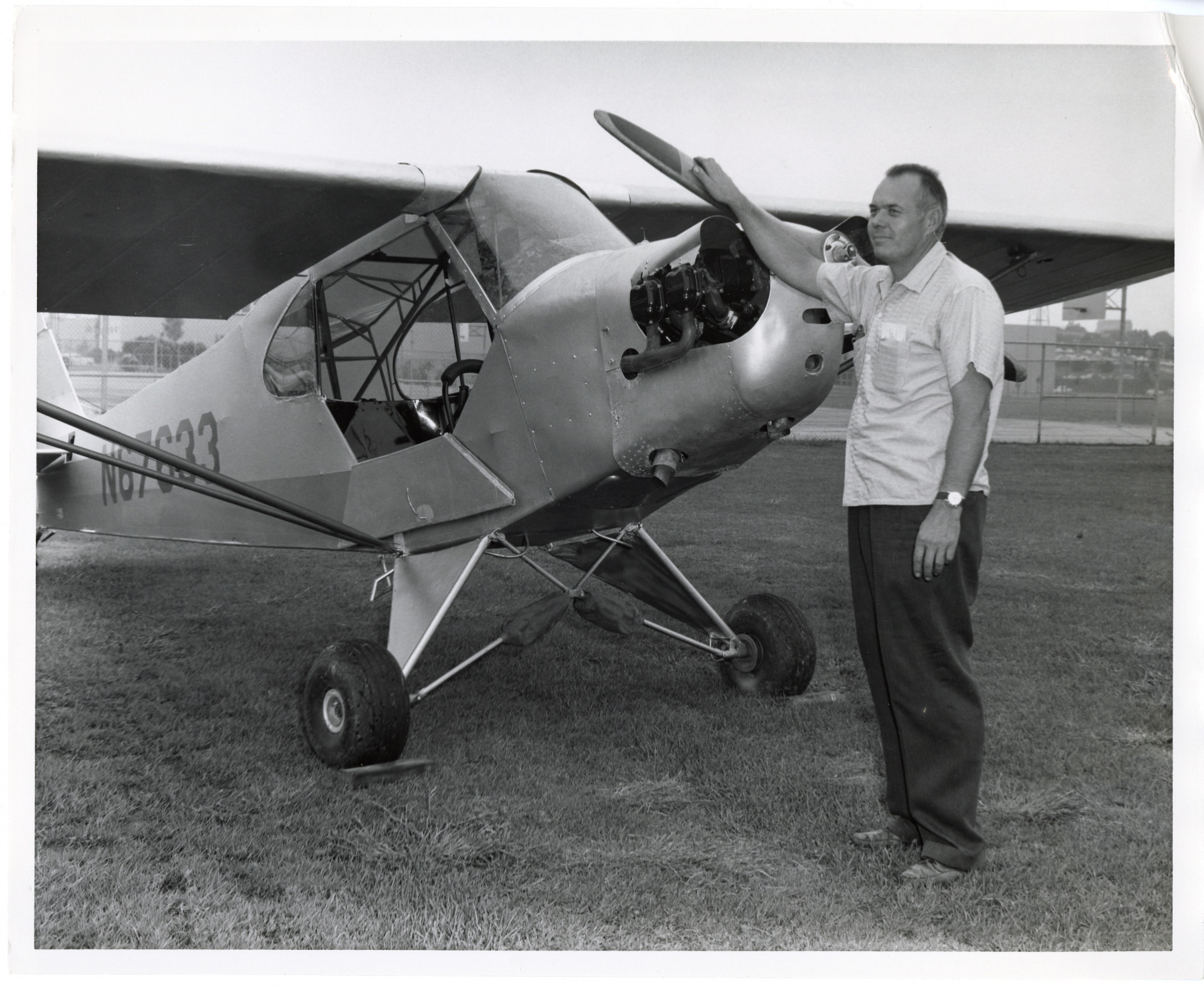
1963 The Aerospace Workshop
Dr. C. Thomas Dean, Dean of the School of Applied Arts and Sciences, inspects a single engine airplane.
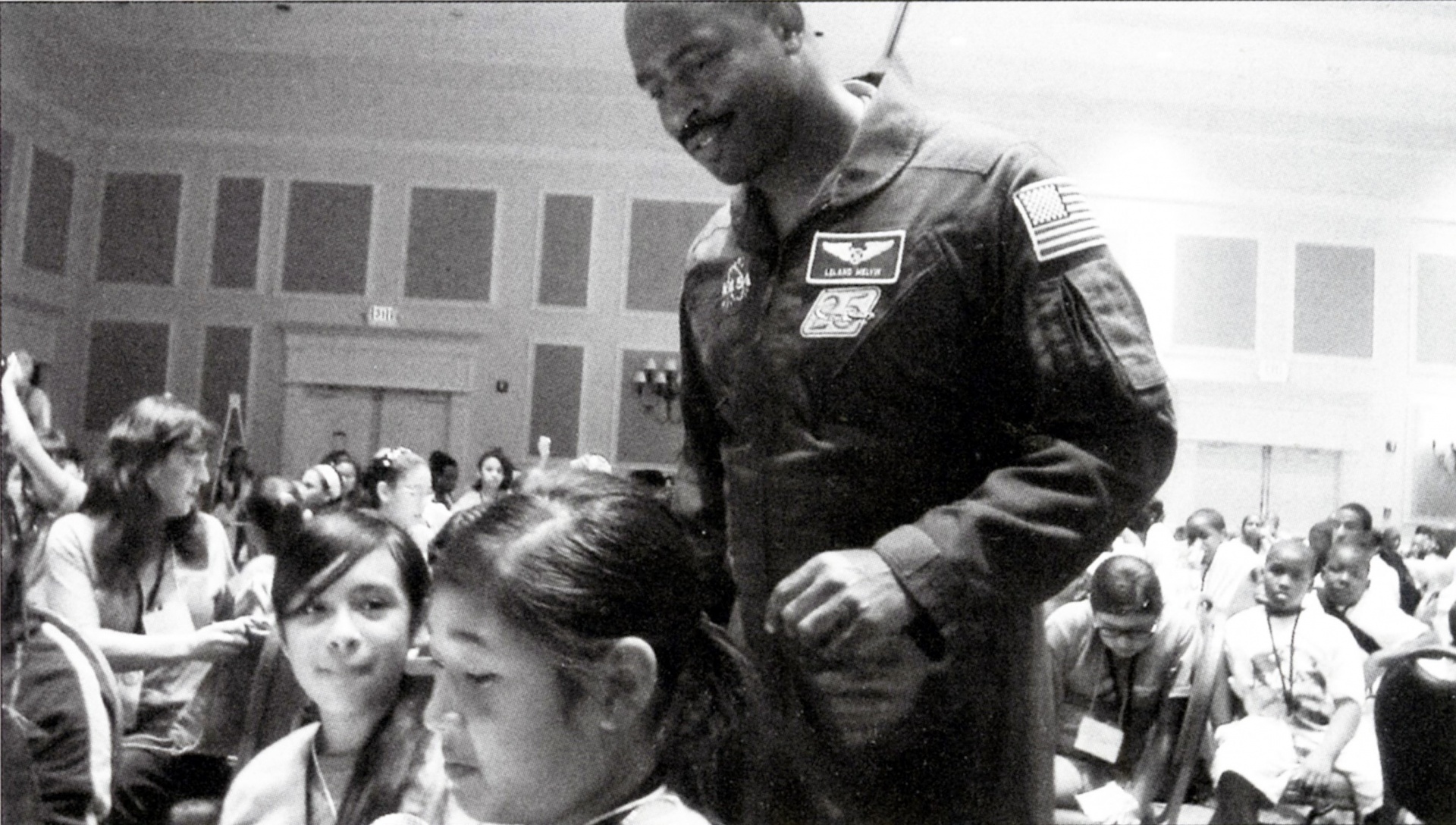
2010 Women in Engineering Outreach Program
A NASA supervisor oversees the project.
Workforce ‘Hub of the West’
“I want to think about the past and the future coming together in space for the city,” said Long Beach Mayor Robert Garcia ’02, ’10, kicking off the June Economic Forum. “The future is about satellites. It’s about rockets. It’s about space. . . We have become a hub on the west coast for this amazing work. As we like to call it now – Space Beach – is the future of so many good jobs, here and across the region.”
As industry-leading aerospace companies focus their attention on the new space race and their investment capital on the Long Beach region, the event focused on the collaborative opportunities these space and technology ventures present. The Economic Forum events are themselves a product of the enduring partnership of the Long Beach State Office of Economic Research, the City of Long Beach Economic Development Department, and the Long Beach Economic Partnership, which support space enterprise as an economic catalyst.
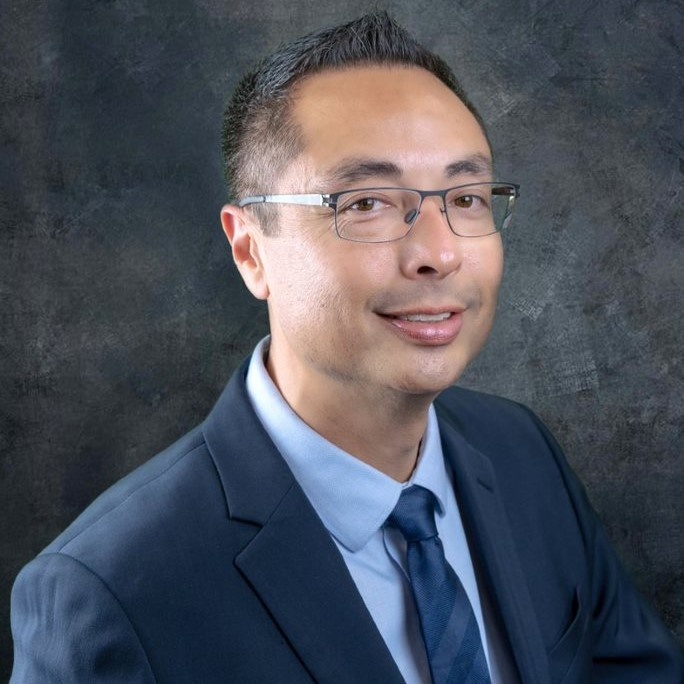
Seiji Steimetz, professor and chair of Economics at CSULB and director of the Office of Economic Research, is a key player in the city’s economic development effort and a strong proponent of the Space Beach boom.
“People thought aerospace disappeared in Long Beach, but that’s never been the case,” Steimetz said, referring to the closure of the Boeing C-17 Globemaster III plant in 2015. “Aerospace represents 2% of all employment and 5% of all wages in Long Beach, which is comparable to total payroll across all restaurants and bars in the city. With the recent innovation boom, there’s been a nearly 50% increase in employment in the last 3 years. That’s just space related companies, not even supply chain.”
CSULB currently enrolls more than 5,000 engineering students and graduates some 1,200 aeronautical, electrical, mechanical, chemical, civil, computer engineer and computer scientists on an annual basis. Hundreds of those graduates staff the local facilities of multi-national space ventures like SpaceX and The Aerospace Corp., and thousands are designers, engineers, and executives at longtime CSULB industry partners like Boeing and Northrop Grumman.
“Talent is the essential resource that great companies are competing for in the modern economy,” said Long Beach Economic Development Director John Keisler. “The reason that Long Beach is competing for great space and technology companies is because of the incredible ongoing talent production provided by CSULB including over 1,200 new engineering graduates per year."
Great companies will continue to come to Long Beach so long as CSULB continues to provide this precious resource to support their growth.
With facilities in Long Beach, Seal Beach, and El Segundo, Boeing relies heavily on CSULB to maintain its talent pipeline. Executives laud The Beach’s “practical” education - an applied, hands-on curriculum that enables new graduates to hit the ground running and equips them to meet a wide range of challenges with creative, out-of-the-box solutions.
Diversity is another distinction: The Beach is one of only a handful of U.S. universities that has been accredited by the federal government as both a Hispanic-Serving Institution (HSI) and an Asian American and Native American Pacific Islander-Serving Institution (AANAPI), and the College of Engineering placed 9th for Hispanic students and 14th for minority students overall in annual rankings published by “Diverse Issues in Higher Education.”
Even as it develops, the Space Beach workforce benefits from the same energy as the progenitors of the aerospace industry. Today, partnerships with the world’s top aerospace companies are vital to curriculum design and implementation, internship support, skills-gap training, mid-career training, and groundbreaking student co-curriculars, giving CSULB the unique ability to elevate its communities to enter and lead this high-power workforce.
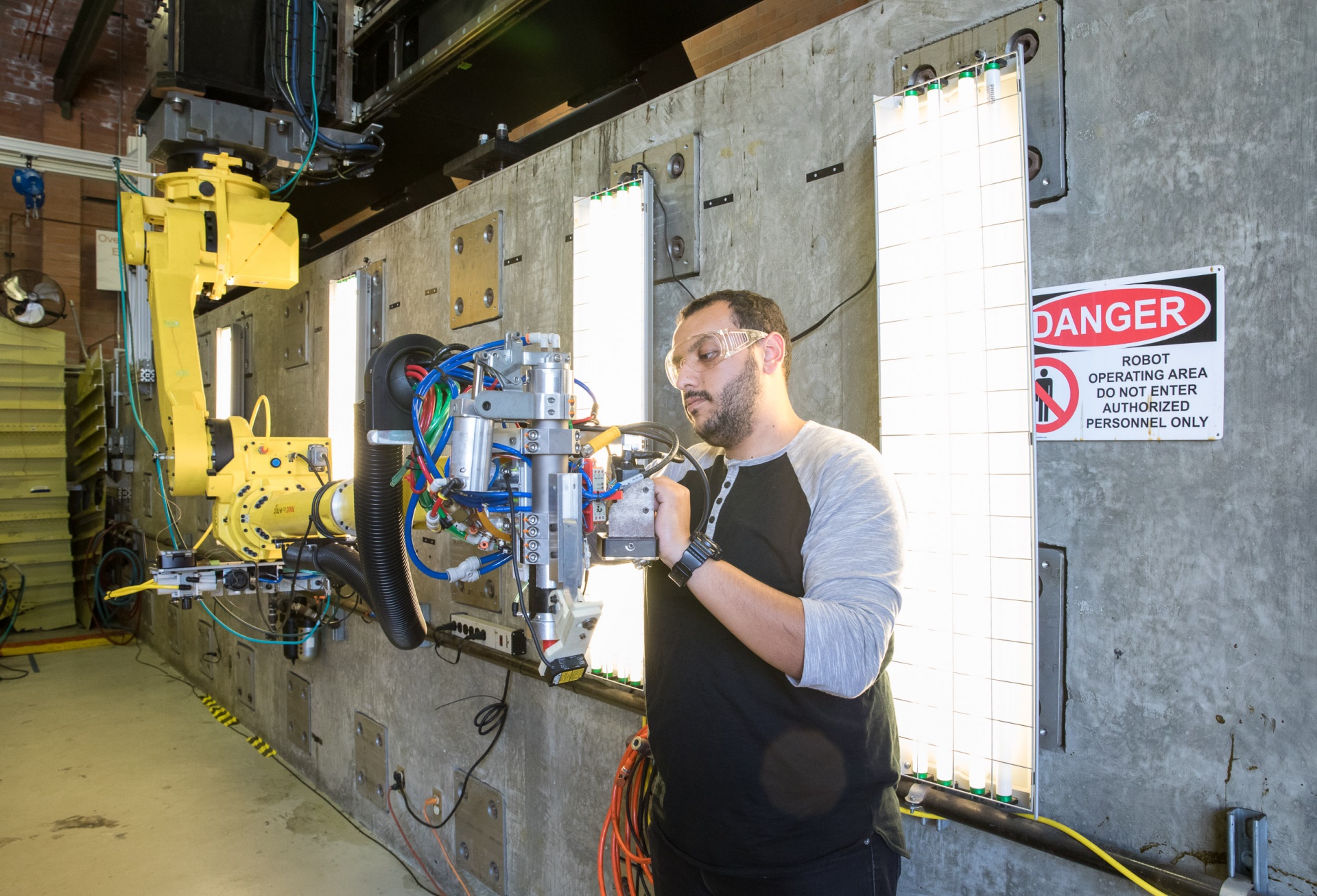
Boeing Manufacturing Lab
A student configures flight system hardware.

Antelope Valley Engineering Program (AVEP)
Marcea Ascensio and cohort at NASA Armstrong perform an indoor test of the navigation system they put on a quadcopter.
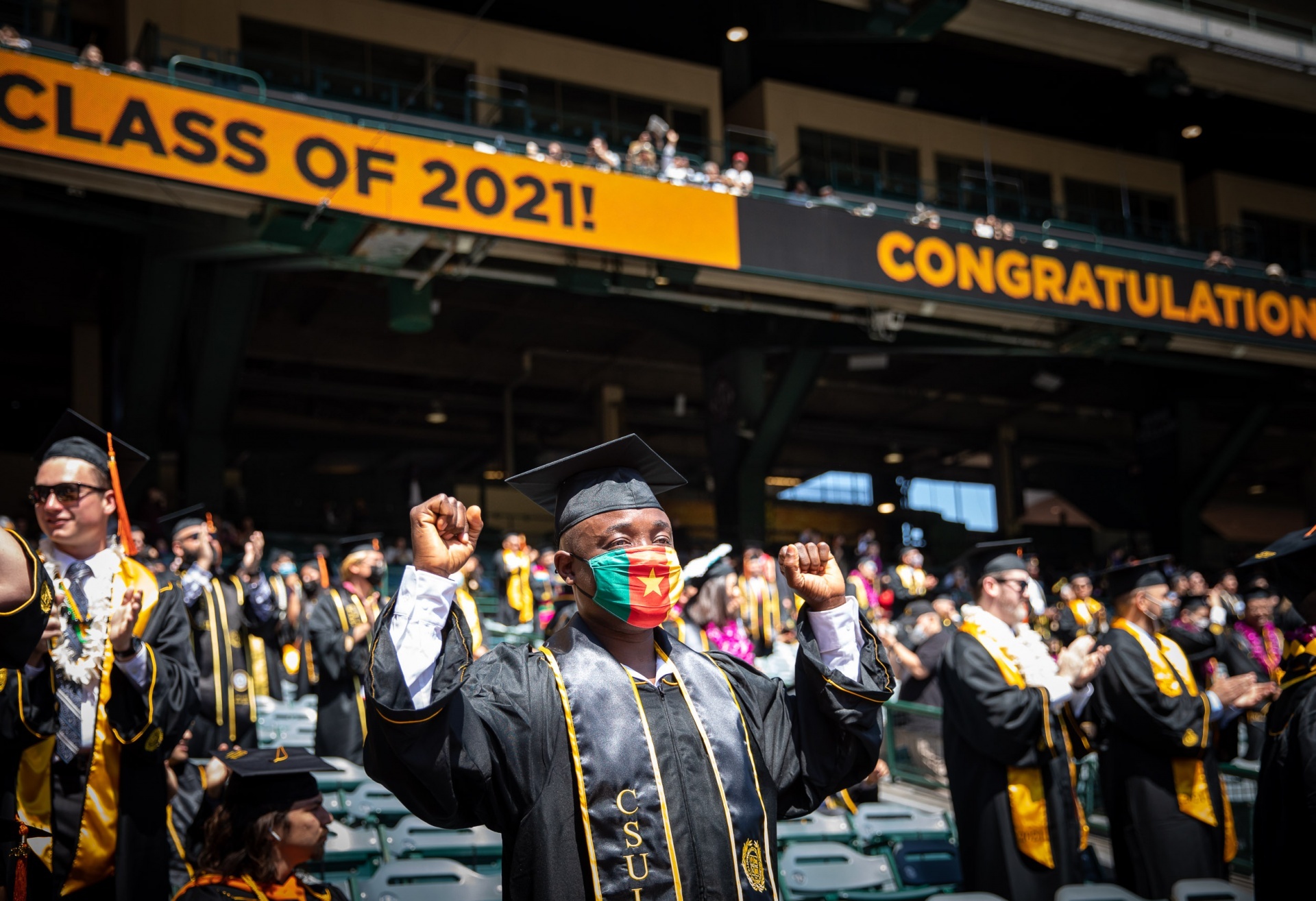
Commencement 2021
College of Engineering graduates celebrate at Angel Stadium of Anaheim.
Students Primed for the Future
Beach sand proved to be no obstacle for the hearty treads of the CSULB Lunabotics Team’s prototype lunar rover, which capably demonstrated its ability to mine lunar regolith to a panel of NASA judges in June 2021. Complimented by a stellar presentation, the Long Beach team – the Space Sharks – took home first place in California and 13th in the nation in NASA’s annual LUNABOTICS competition.
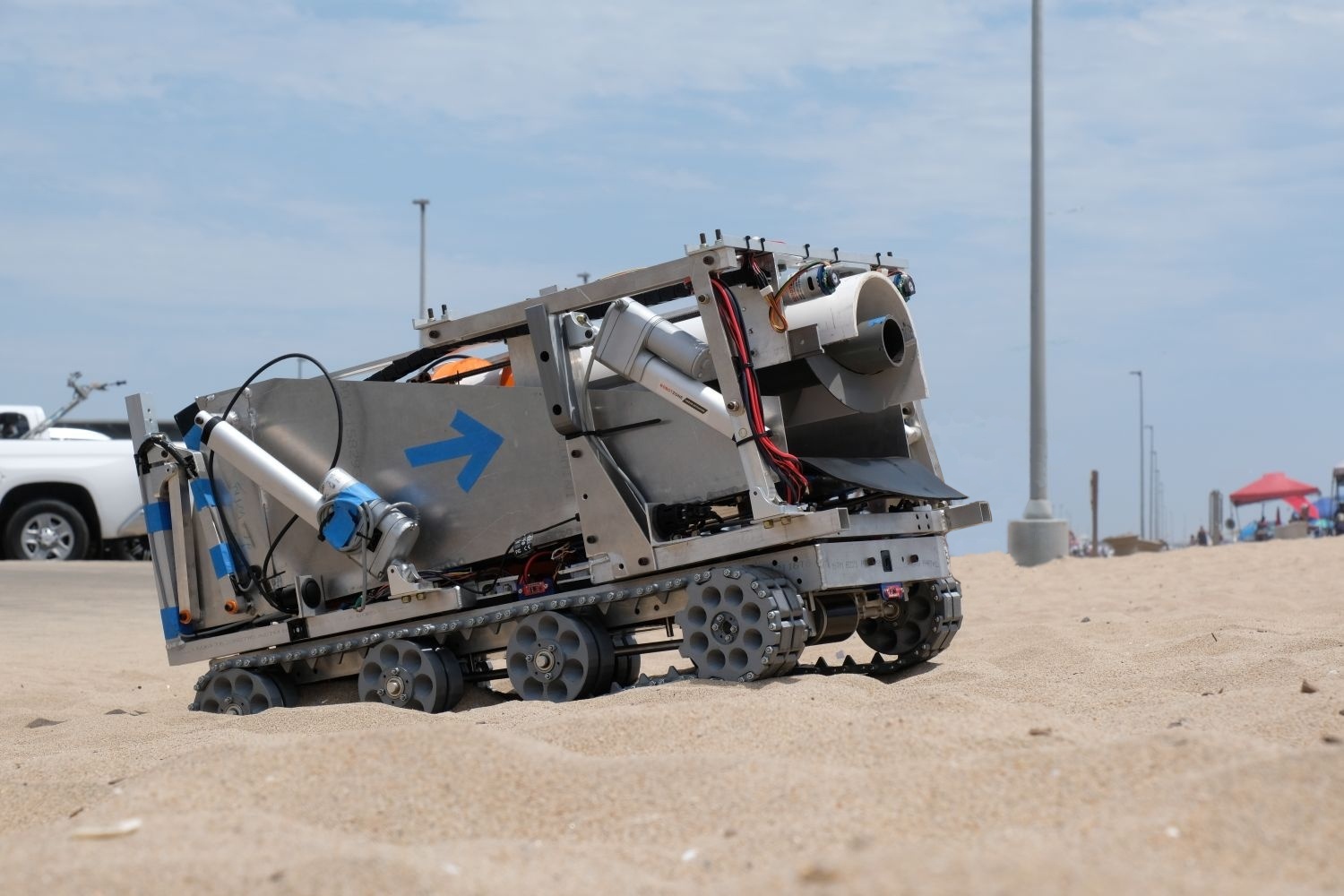
The rigors of the competition prepare student teams for careers as NASA systems engineers by emulating real aspects of the ARTEMIS project – NASA’s planned 2024 lunar mission.
“I loved the process of ideation, execution, and celebration,” said mechanical engineering student and Space Sharks business leader Dan Dao. “Connecting with companies and building recruitment efforts was no small feat. I learned why strong ethical leadership is necessity for any organization.”
The Lunabotics team is one of several space-faring co-curricular teams on campus, and each is setting the pace for the stars. Long Beach Rocketry took two first place finishes in NASA’s Student Launch Competition in June. The Beach Launch Team is a student-organized group with a singular goal: to be the first university rocket team to launch a liquid bi-propellant rocket to the Karman line – the edge of space.
Physics senior Dan Morgan is a member of the Air Force Research Laboratory (AFRL)’s regenerative engine research project, experience he puts to use as the Beach Launch Team’s chief engineer.
“What Beach Launch Team does with liquid rocketry is the closest experience a student can get to working in the aerospace industry,” Morgan said.
I personally have gained so much knowledge and experience that you will never find in an undergraduate classroom through the team.
Of the team’s goal of getting a rocket to space, Morgan said their new rocket, Akheilos, “is a steppingstone on the path to a space capable vehicle. Once Akheilos is successful, I’m confident Beach Launch Team could make the leap to an upscaled vehicle that can reach space.”
Associate Professor Praveen Shankar, faculty advisor for Lunabotics and Long Beach Rocketry, arrived at The Beach in 2011. By 2015, students were competing in NASA-sponsored rocketry competitions and earning top 10 finishes.
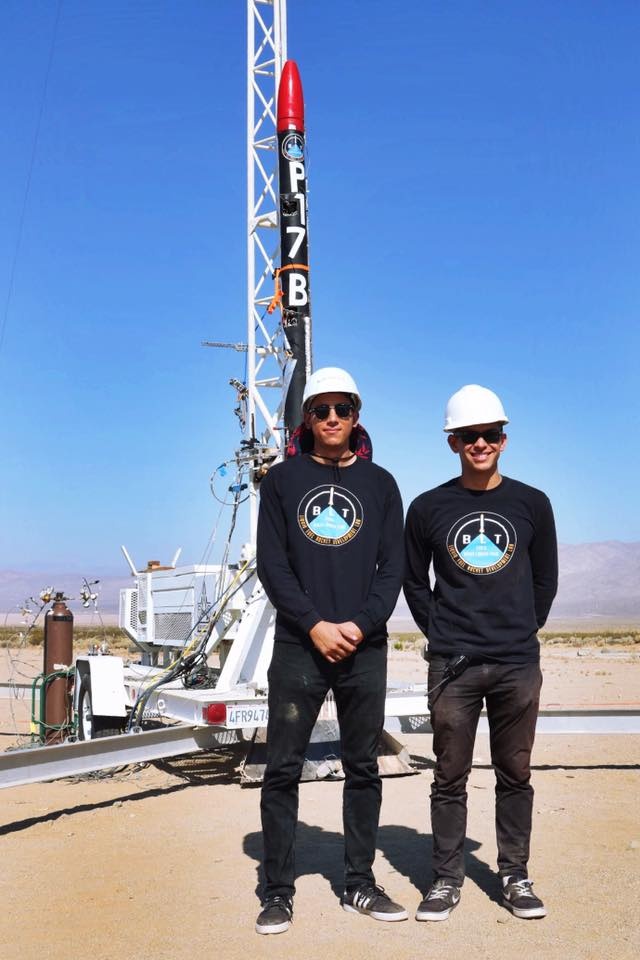
"The competitions put students in real-world situations," Shankar said. “They work closely with NASA engineers through numerous review phases, and their projects aren’t limited to rocket design – like real missions, they also have a particular payload which their rocket must support, which requires considerable research, prototyping, and iteration."
These inspiring projects are the product of a department with decades of research contributions and dozens of programs preparing students in aerospace engineering, computer engineering, computer science, electrical engineering, mechanical engineering, and more.
To remove barriers to access for as many engineering students as possible, CSULB is a key partner in the California Aerospace Technologies Institute of Excellence (CATIE), a nationally recognized aerospace collaboration network joining the College of Engineering with the Cal Poly Pomona College of Engineering, Antelope Valley College, the AFRL, the Mojave Air and Space Port, and industry partners like Boeing, Edwards Air Force Base, Lockheed Martin, NASA Armstrong Flight Research Center, Northrop Grumman, and Virgin Galactic.
“One of our missions is to provide access to higher education,” said College of Engineering Dean Jinny Rhee, noting that Pell-eligible and first-generation students make up nearly half of the overall student body. Rhee highlighted the Beach Engineering Student Success Team (BESST) program, a cohort which supports first-year students from diverse backgrounds to become calculus-ready and to tackle the challenges of a rigorous engineering education.
“I came to the College of Engineering with a student success focus,” Rhee continued. “There are groups of students whose talents are not being realized because of factors that have nothing to do with their ability to contribute to the field. We will change this through programs like BESST, which has been extremely successful at fostering study skills and math achievement. We plan to capitalize on the re-emergence of large-scale aerospace enterprise and position the College of Engineering as a space and aerospace hub to the benefit of our students and faculty.”
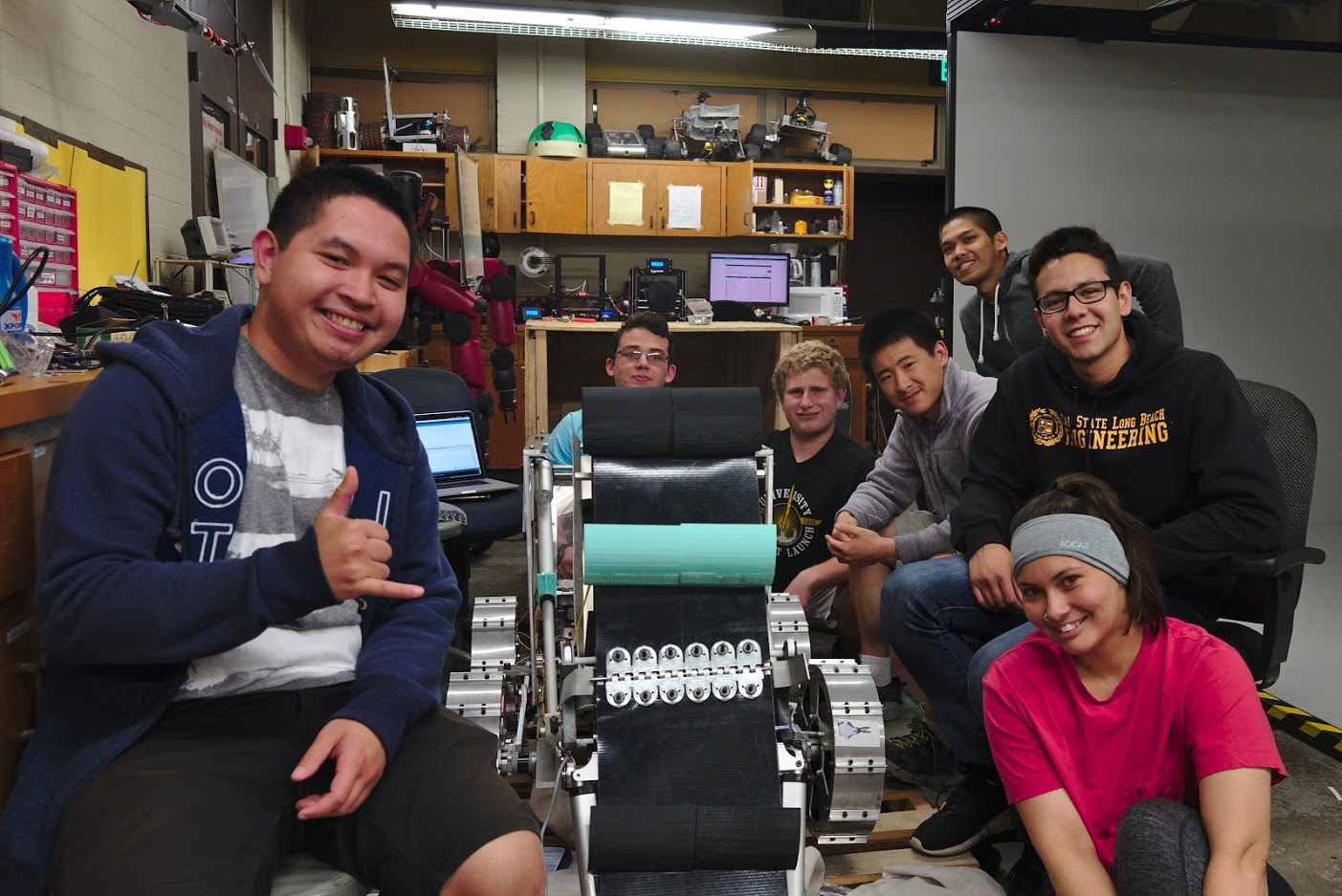
CSULB Lunabotics
The team poses with a rover prototype.

Beach Launch Team
The team prepares for launch.

Rocketry Lab
Demonstrating a prototype rocket inside the Rocketry Lab.
Advanced Rocketry Research
In a dark laboratory in the Mechanical & Aerospace Engineering Department, a bright green laser beam pierces a delicate array of equipment, revealing behaviors of microscopic particles which graduate student Preston Silverstein carefully records.
These are "holographic measurements of particle motion, to understand solid propellant mixing," explains Assistant Professor Joe Kalman, director of the Solid Propulsion & Combustion Lab. The measurements allow Kalman and his research assistants to help accelerate new mixing and manufacturing techniques as well as integrate novel, high energy density propellants for use in solid and hybrid rockets. “These are aspects of modern propulsion systems whose physics and chemistry have not been fully explored,” Kalman added.
Kalman is a combustion scientist specializing in solid fuels and energetic materials. His work seeks to understand the underlying physics and chemistry of how these materials ignite, decompose, and deflagrate. The lab has received funds, totaling nearly $1.5 million, from the Office of Naval Research and Air Force Research Laboratory (AFRL). State-of-the-art burners, microscopes, lasers, and high-speed cameras allow mechanical and aerospace engineering students to work directly with the equipment and chemicals they will use in the field.
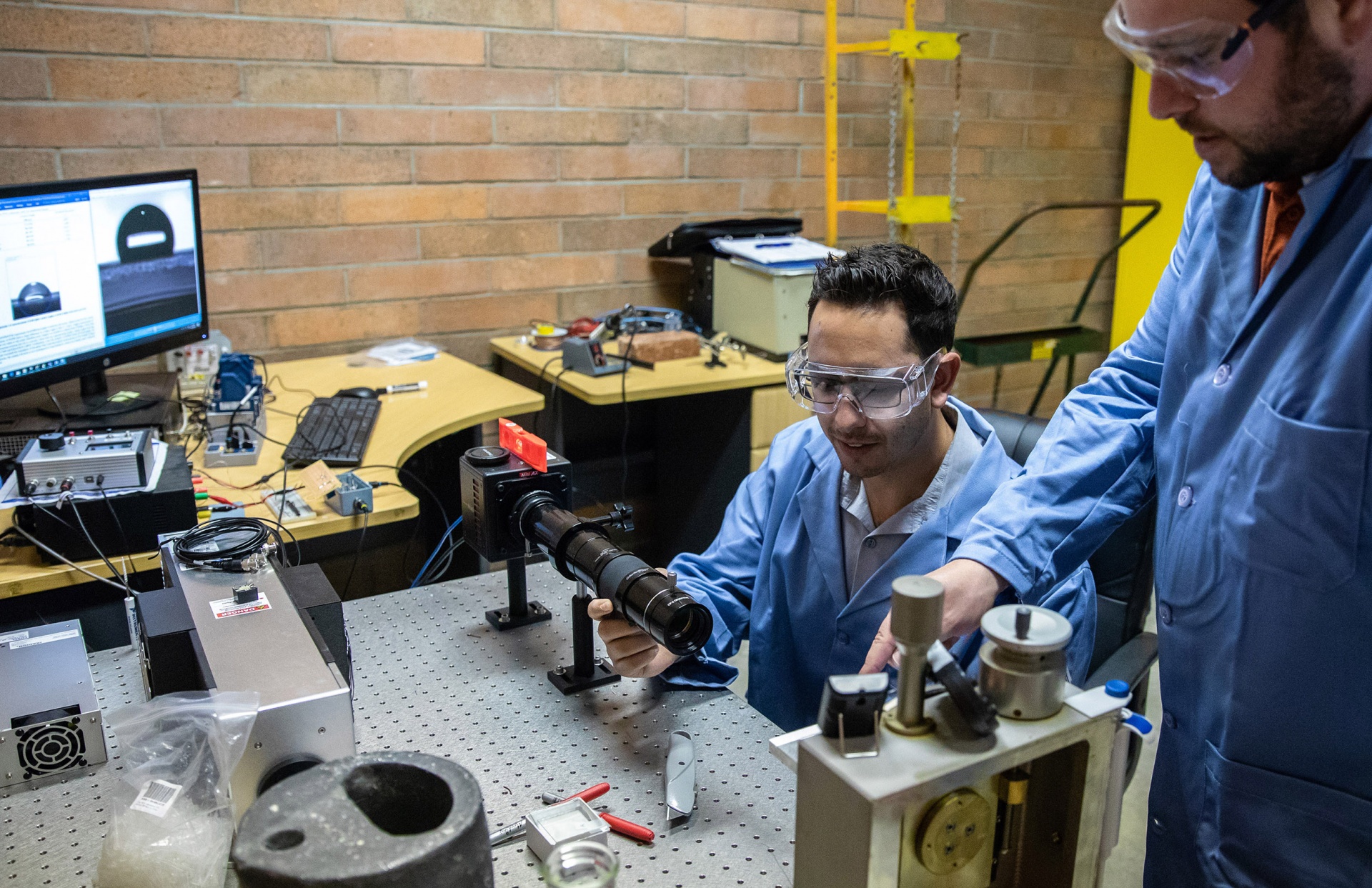
The research underpins defense applications as well as space exploration, and the inception of the U.S. Space Force brings the two even closer together. New propellant manufacturing techniques enable the additive manufacturing (3D printing) of propellant grains that can be tailored to specific applications. Integrating high energy density materials (e.g., metal fuels) will increase thrust, or vertical range. It also opens doors for student researchers, many of whom have presented their work at scientific conferences, published in scientific journals, and gone on to internships and employment with the Department of Defense or earned the prestigious Department of Defense SMART Scholarship that funds students for their graduate career.
Also at home in the Mechanical & Aerospace Engineering Department is the Rocketry Lab, which supports the student teams as well as fundamental, industry-sponsored research.
Professor Mahdi Yoozbashizadeh, faculty lead for the CSULB rocket lab and Beach Launch Team, is a Manufacturing Engineering specialist with numerous aerospace research projects funded by AFRL and aerospace industries. Associate Professor Praveen Shankar, faculty lead for the Lunabotics and Long Beach Rocketry teams, specializes in advanced control systems for complex aerospace applications.
Entering the Rocketry Lab, Professors Shankar and Yoozbashizadeh pass workstations replete with the thrust chambers, structures, and components of rockets. On a long shop table rests a metal framework housing a complex core of propulsion systems, data sensors, and a freshly (3D) printed metal thrust chamber. This is a Pressure-Fed Static Fire Test Stand funded by the AFRL, a work of 6 months of research and production which allows students to test subsystems concerned with the inner structure, engine, propulsion, and avionics of a rocket. Students conduct the tests in the vastness of the Mojave Desert – a safer place to inflict up to 2,000 pounds of thrust force.
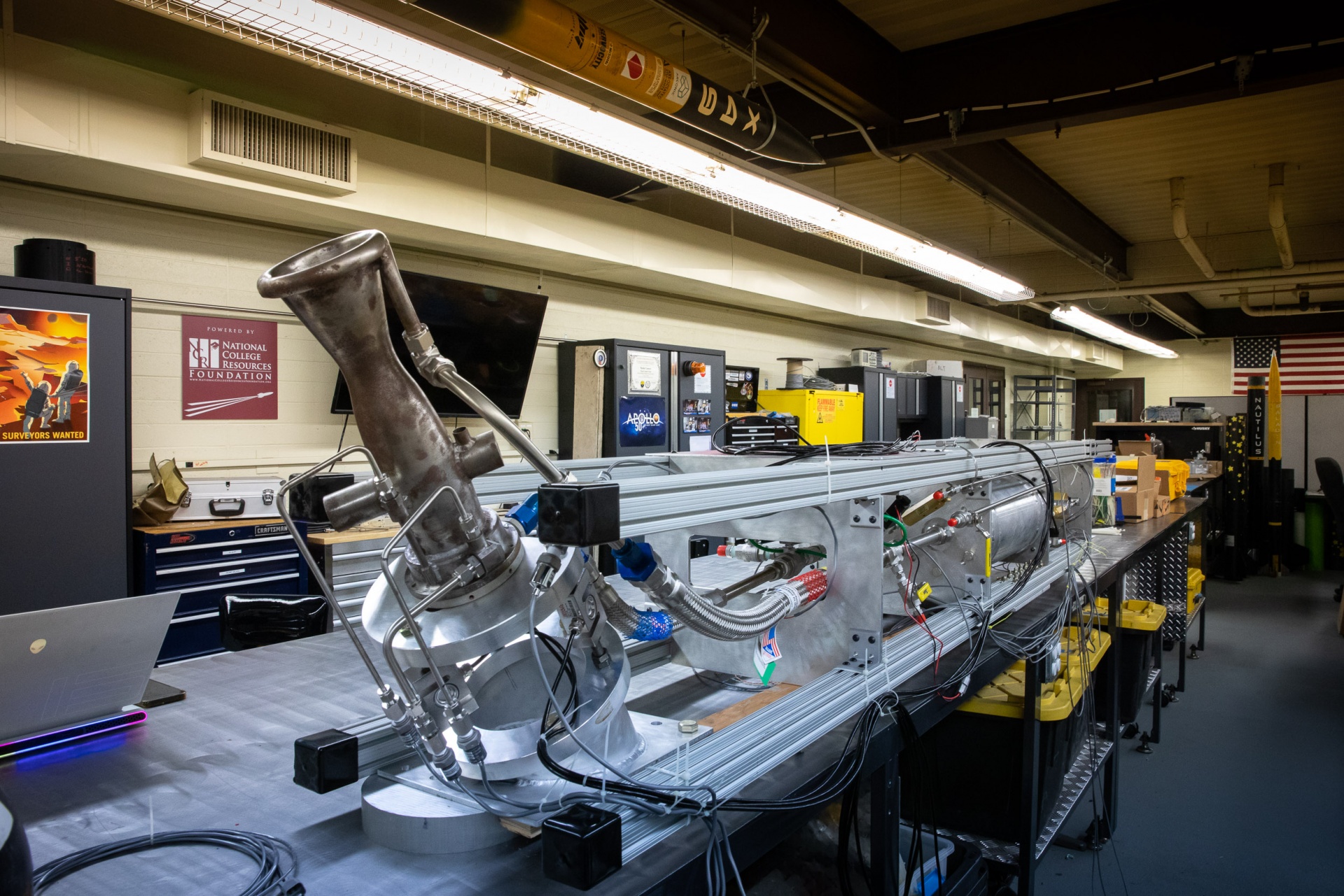
Professor Yoozbashizadeh approaches a 10-foot-tall metal 3D printer and opens a small chamber, revealing a 300-watt laser used to manipulate stainless steel, titanium, and other metals. Accompanied by a variety of plastic and composite 3D printers, students are able to do “all the fabricating of a rocket, from A to Z, in house, with research grade equipment in collaboration with experts at NASA and the Air Force,” he explained.
Professor Yoozbashizadeh and collaborator Professor Parviz Yavari hold a patent in metal 3D printing using nanoparticles, and the work in the COE Rocketry Lab has generated dozens of research papers and master student theses just in the last five years.
We are doing significant work in additive metal manufacturing, which is a top focus in the industry today.
“Relativity, Northrop, and others are all looking at ways to improve metal 3D printing," Yoozbashizadeh said. "At the same time, we are also producing the engineers these companies want to hire,” he added, joking about high turnover as their research assistants tend to get hired away immediately after graduating.
With so many industry partners and talent pipelines, Professor Shankar explained, they are able to keep in close collaboration with industry experts and stay on the cutting edge of rocketry research. “We want to be an integral part of the growing astronautics movement in the city.”
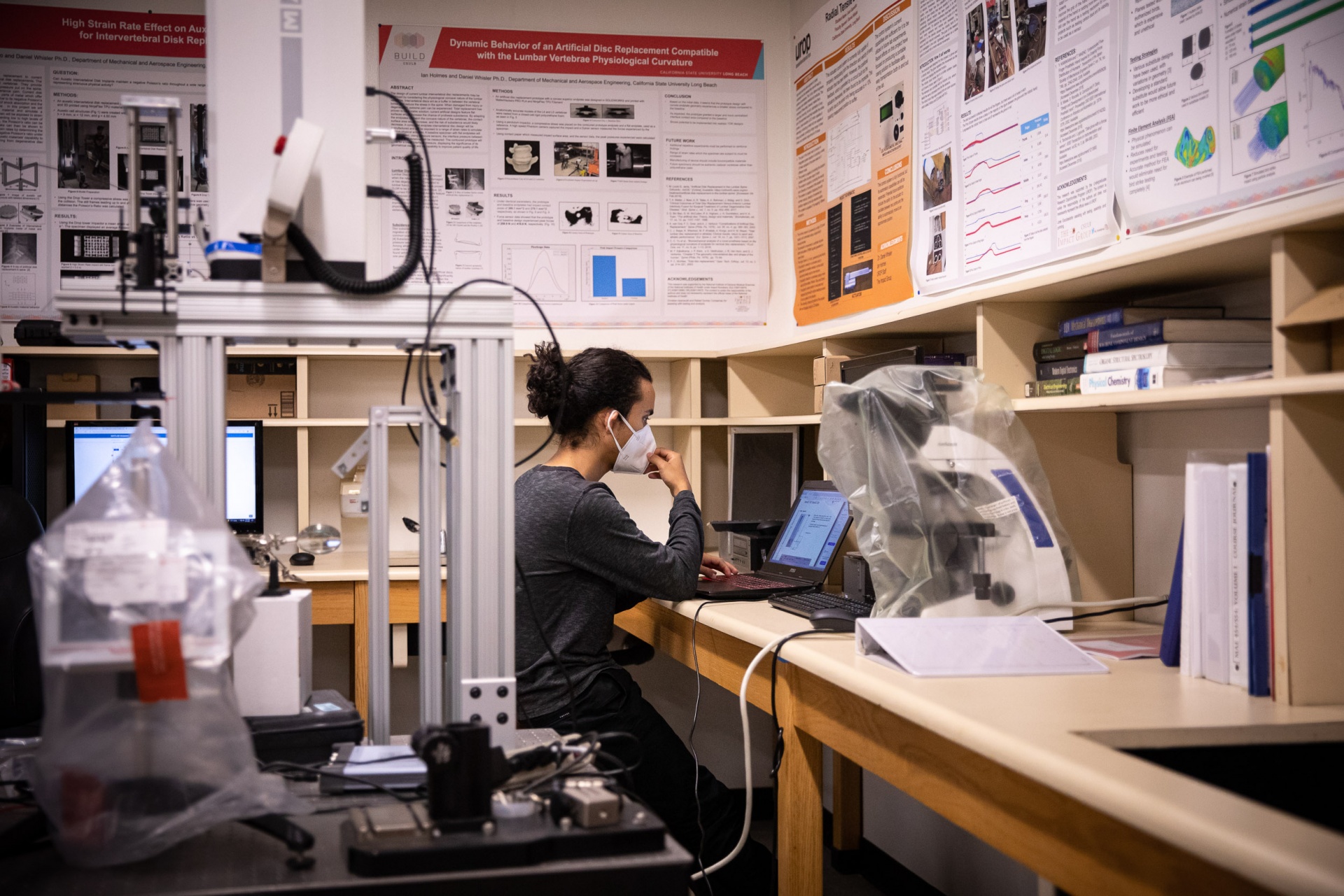
Solid Propulsion & Combustion Lab
Lasers, burners, microscopes and cameras line the lab.
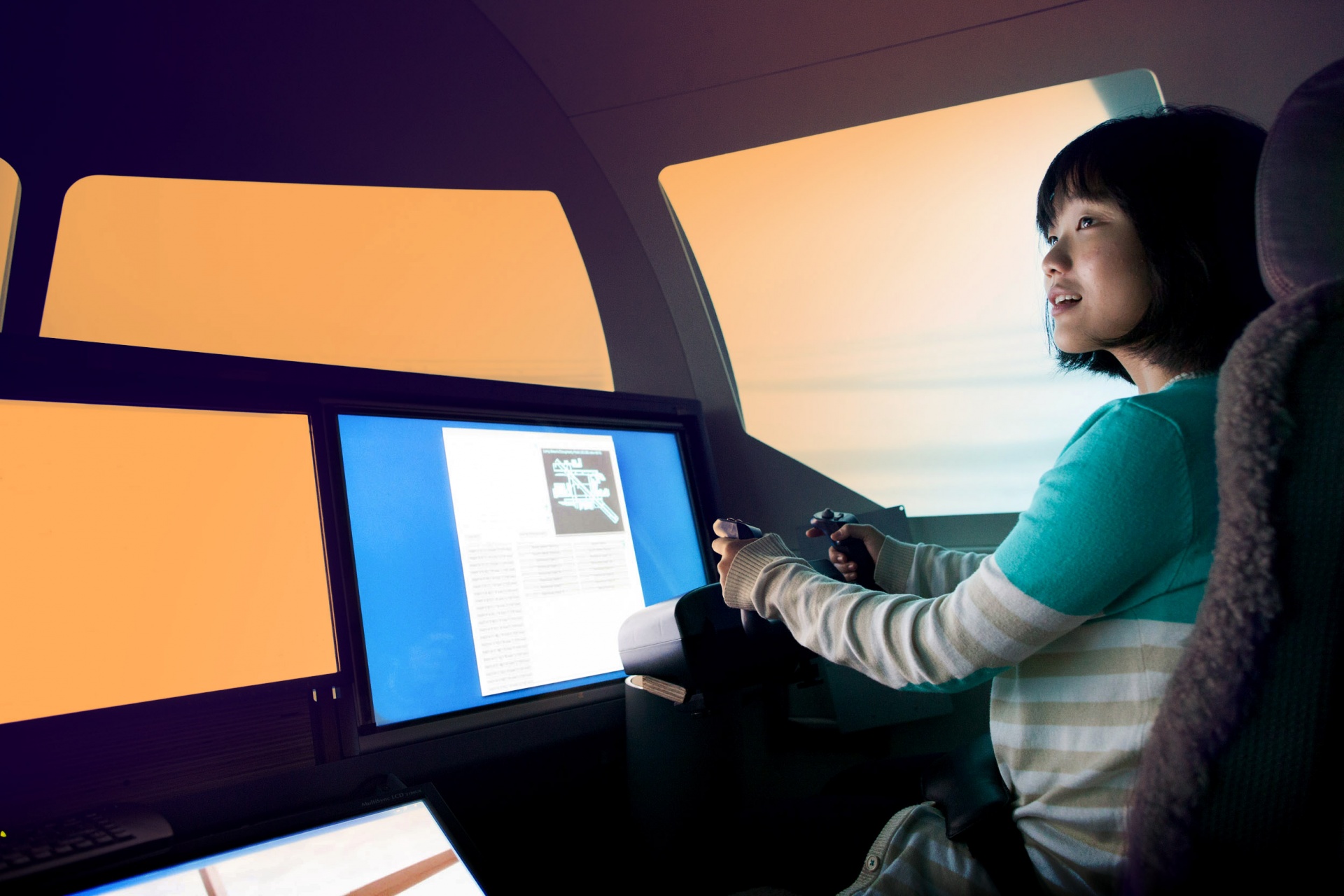
Women in Engineering
The Women in Engineering group uses the Boeing Flight Simulator.
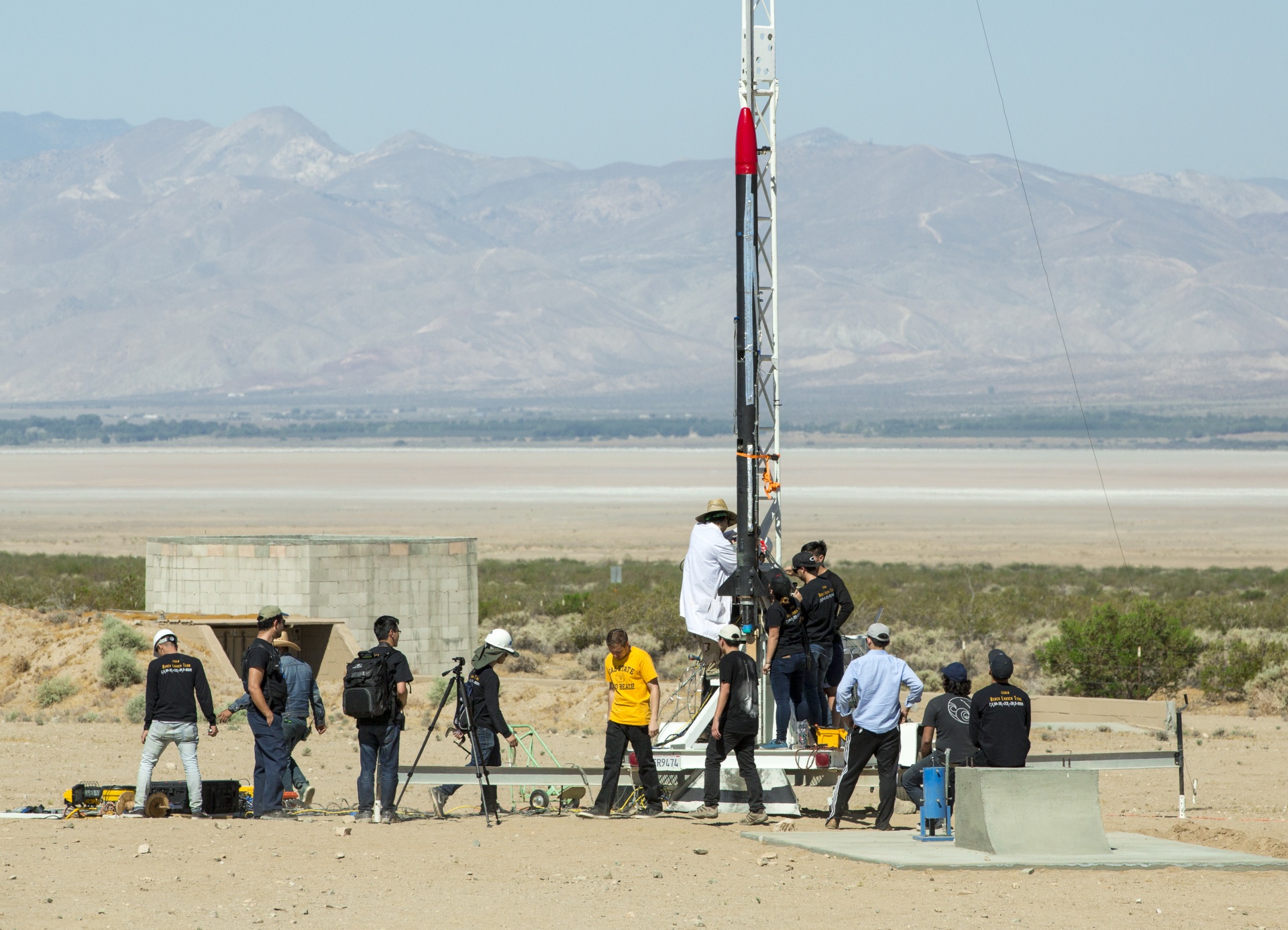
Long Beach Rocketry
The team performs a test launch in the Mojave Desert.
Legacy of Industry Partnerships Continues
On September 16, 2021, a SpaceX Falcon 9 booster rocket returned from a successful mission and gracefully landed in the Port of Long Beach.
The West Coast Starlink mission is one of many high-profile space ventures powering the astronautics boom in Los Angeles and Orange counties, and a vanguard of the rapidly evolving commercial space industry. As Rocket Lab senior vice president Lars Hoffman noted during the June Economic Forum, SpaceX is one of the first companies to provide space services (such as cargo transportation to the International Space Station), rather than just hardware.
In his research presentation at the Forum, Professor Seiji Steimetz explained that such advancements are “driving Long Beach’s post-COVID economic recovery and future economic growth and recasting the region as a “Space Innovation Ecosystem.” Or, as Mayor Garcia coined it, “Space Beach.”
As new ventures enter that “Space Beach Ecosystem,” they join CSULB and industry partners in a collaborative, innovational environment with history tracing back to the first space race.
Boeing has supported numerous research and development projects over the years — technology currently used in wing assembly is just one example — educational initiatives, labs, simulators, and scholarships. CSULB made history in 2014 by being the second institution to receive the prestigious “Boeing Supplier of the Year” award, which recognizes exceptional performance and contributions to Boeing’s overall success, and the Boeing Endowed Chair in Manufacturing provides perpetual funding and a permanent link to the university.
Northrop Grumman is similarly invested in faculty research, student organizations, and talent pipelines, and sponsors the College of Engineering Veterans Resource Center.
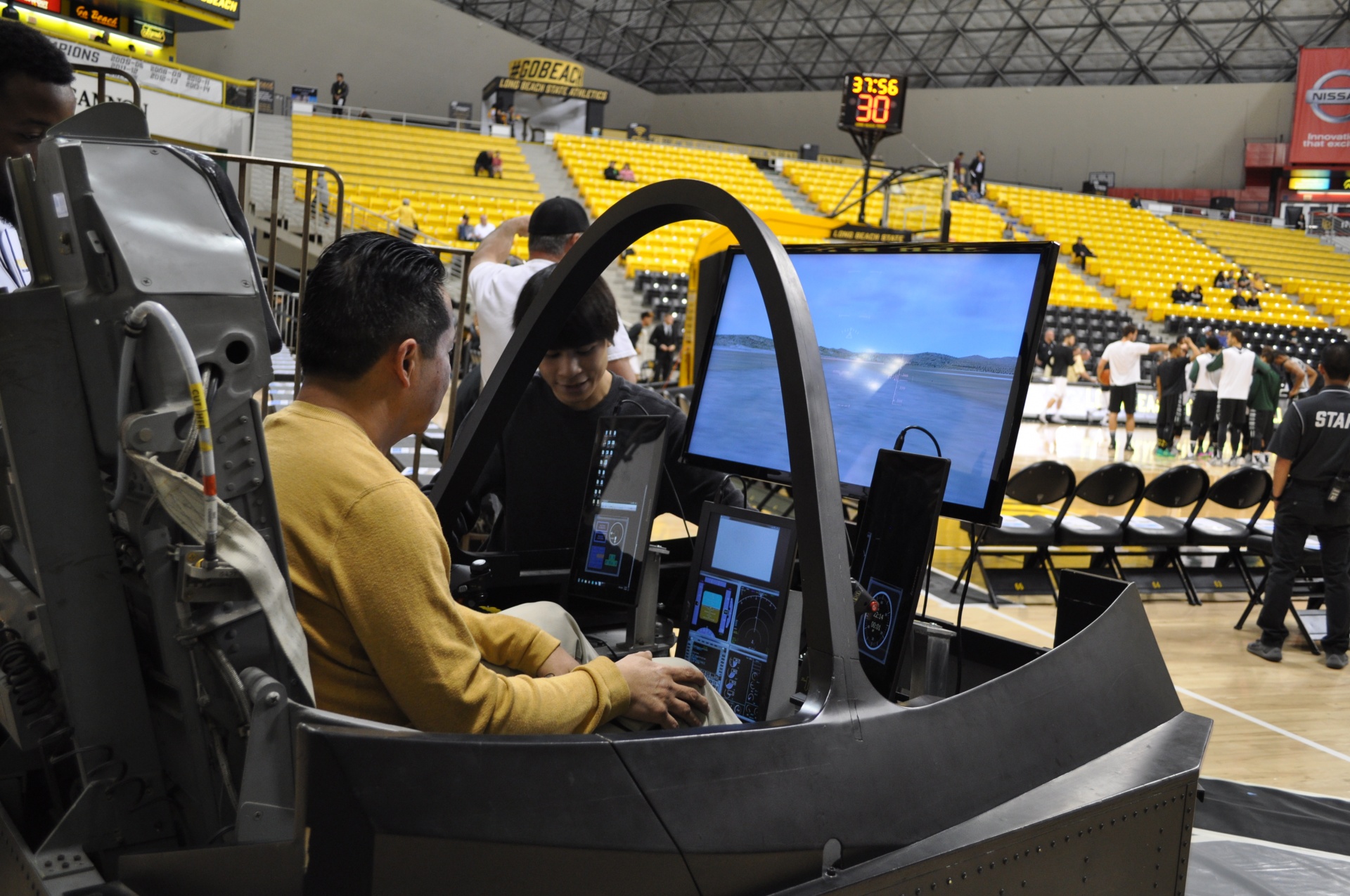
Boeing, Northrop Grumman, Virgin and The Aerospace Corp. all have representation on numerous CSULB boards, including the College of Engineering Dean’s Advisory Council, and the university tops Northrop Grumman’s VIP University list and The Aerospace Corp.’s top tier list.
In August 2021, The Aerospace Corp. established the Aerospace Corporation Dean’s Leadership Academy, elevating the College of Engineering’s Dean’s Leadership Institute with scholarship and programming support. The investment adds to the College of Engineering’s extensive relationship with the company, which supports recruiting events, student organizations and projects, and professional development, and which employs nearly 200 CSULB alumni.
Explaining why companies are committed to supporting Beach talent, Boeing Vice President of Safety and Quality Philip June said that “CSULB-educated engineers have a stellar work ethic."
Many of these students have worked throughout their lives to support themselves or their families, and they take great pride in being dependable, reliable, responsible contributors to our workforce.
Professor Steimetz concurred, encapsulating his Forum presentation: “The skilled regional workforce in aerospace and related industries is the biggest draw. We also have an established regional supply chain, prime commercial real estate for aerospace R&D and manufacturing, and a diverse and dynamic urban setting to live and work.”
The Forum included virtual tours of the ambitious projects and state-of-the art facilities being built in Long Beach, from Morf3D and Relativity Space’s large-scale industrialized additive manufacturing facilities to Plastidyne Engineering’s Plastics Machining and Processing plant to Embedded Ventures investments firm.
Other new projects include Boeing and Raytheon satellite divisions in El Segundo. One of the highest profile projects in the area is Northrop Grumman’s production of the James Webb Space Telescope, which will launch in December 2021.
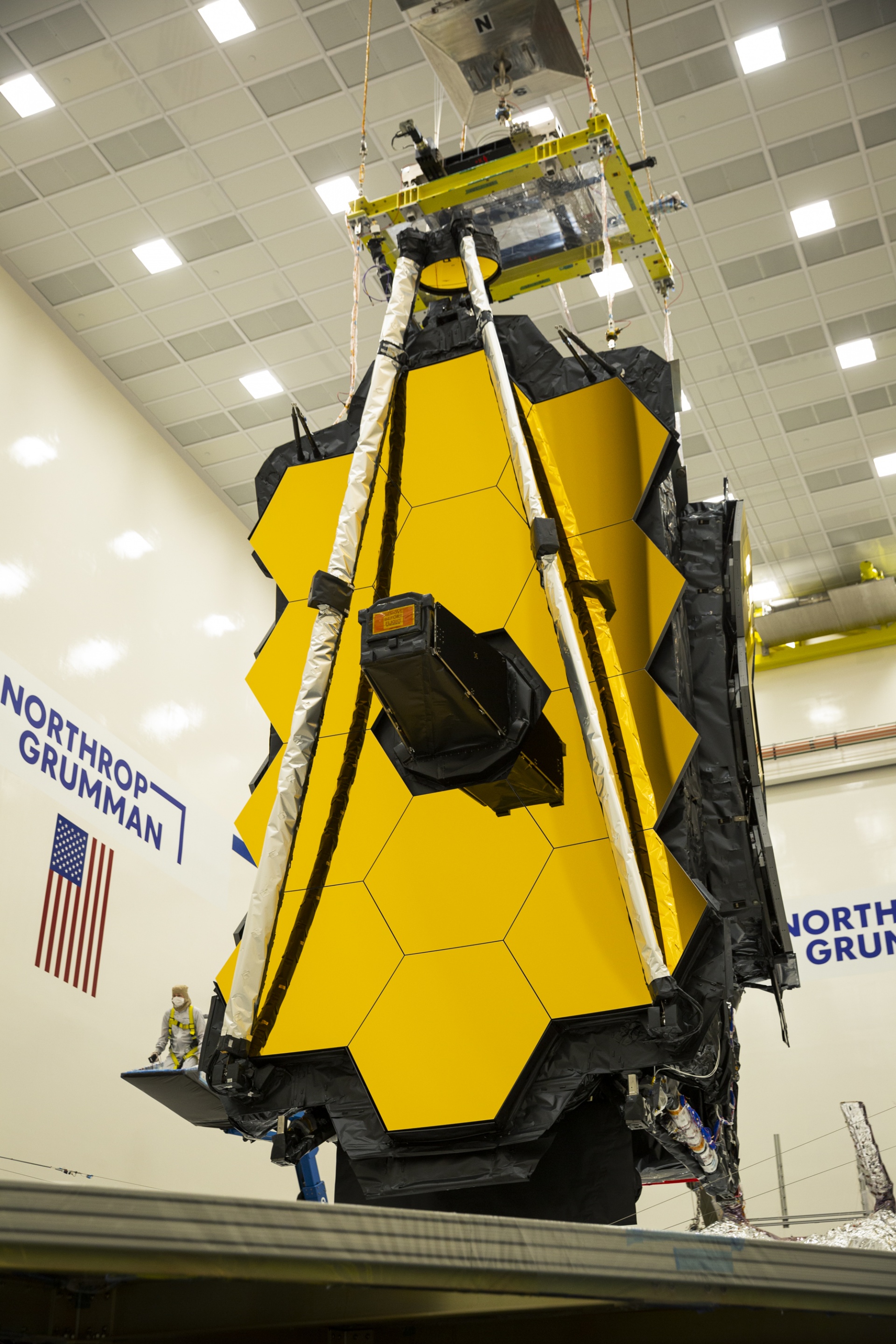
“Over 2,000 space jobs are coming to Long Beach just from Relativity Space taking over Boeing’s former C-17 facility,” Steimetz added. “And the global-scale projects are supported by dozens of smaller companies which have thrived for decades producing aviation hardware and supplies for public and private enterprise in the area.”
Astronautics productions are propelling the regional economy. Rockets are launching and landing on the Long Beach shore. CSULB students and alumni are on the frontier of research and production. The convergence of space enterprise is recasting the region the way tech companies monikered Silicon Valley.
With so much innovation transforming both academics and industry, the “Space Innovation Ecosystem” is not a future objective – Space Beach is here.
Space Beach represents The Beach’s enduring commitment to a shared vision for human progress. CSULB welcomes new partners, new possibilities, and new opportunities for service to the public good – a pillar of its Beach 2030 strategic plan. In our university’s 64-year history at the forefront of aerospace and aeronautics, the energy that ignited research and scholarship during the first space race has only grown, and the partnerships we continue to forge empower the pioneers of our new age.
















